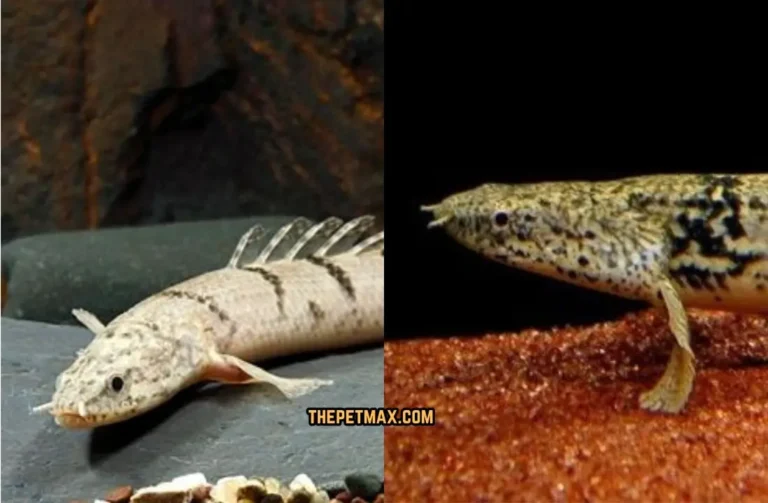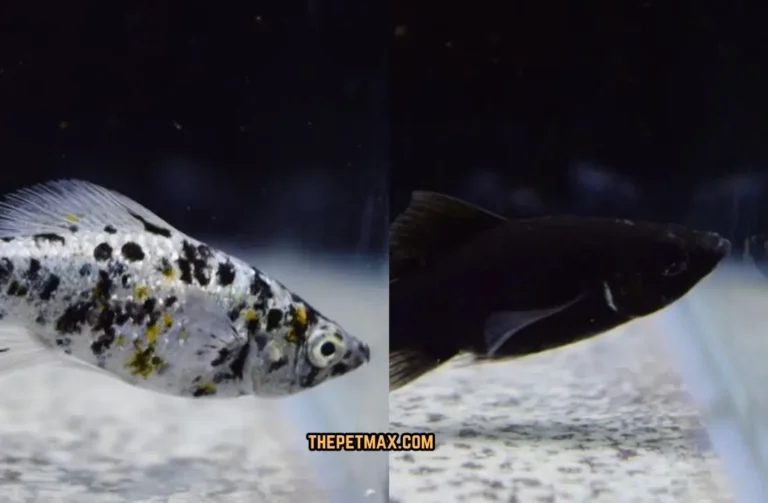Pink Convict Cichlid Fish Care Guide
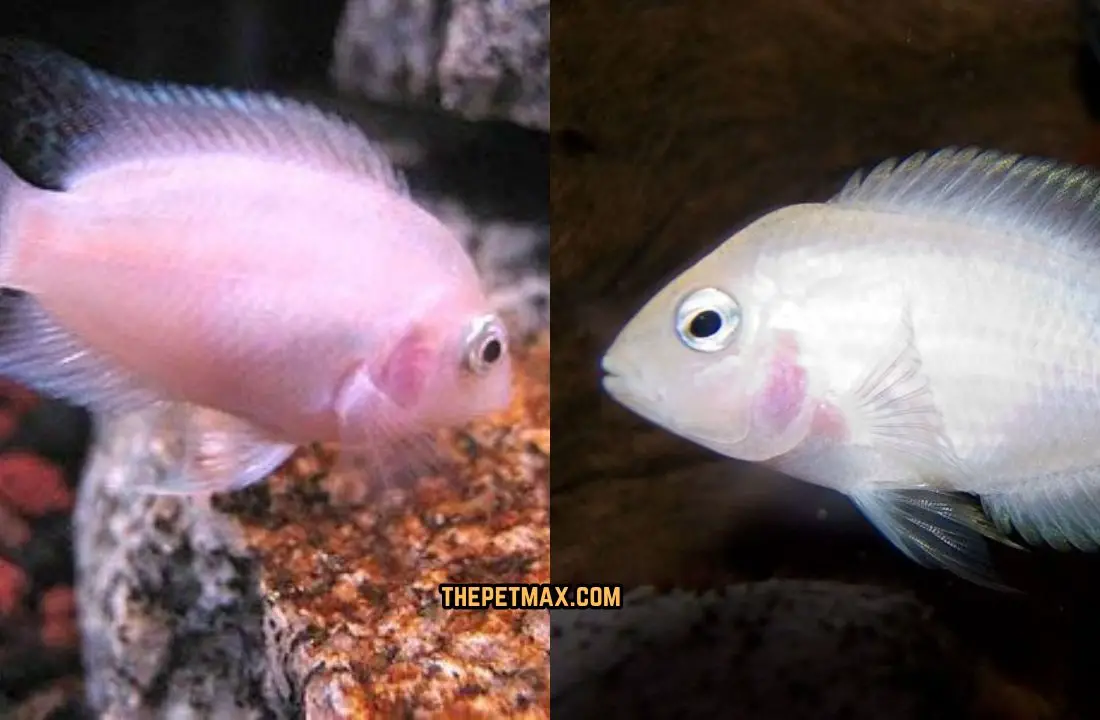
The albino form of Archocentrus nigrofasciatus (Black Convict Cichlid) is popularly known as the Pink Convict Cichlid. One of these hardy subspecies is the pink convict cichlid, which is native to Central America.
They are very popular in the hobby because they are suitable for beginners, they are very easy to breed and they can take on larger and more powerful cichlids. The monochromatic base color for Pink Convicts is pink. The female will have iridescent, gold-tinted scales on her body and dorsal fin during breeding.
The male’s anal and dorsal fins are larger and as the male Pink Convict grows up, a nuchal hump grows on its head and is much bigger than a female.
Contents
- 1 Natural History of Pink Convict Cichlid:
- 2 Appearance of Pink Convict Cichlid:
- 3 Behavior and Temperament of Pink Convict Cichlid:
- 4 Food and Diet Requirements of Pink Convict Cichlid:
- 5 Tank Requirements of Pink Convict Cichlid:
- 6 Should You Get a Pink Convict Cichlid for Your Aquarium?
- 7 Pink Convict Cichlid Breeding:
- 8 Health Conditions of Pink Convict Cichlid:
- 9 Conclusion:
- 10 FAQ’s:
- 11 Related Posts:
Natural History of Pink Convict Cichlid:
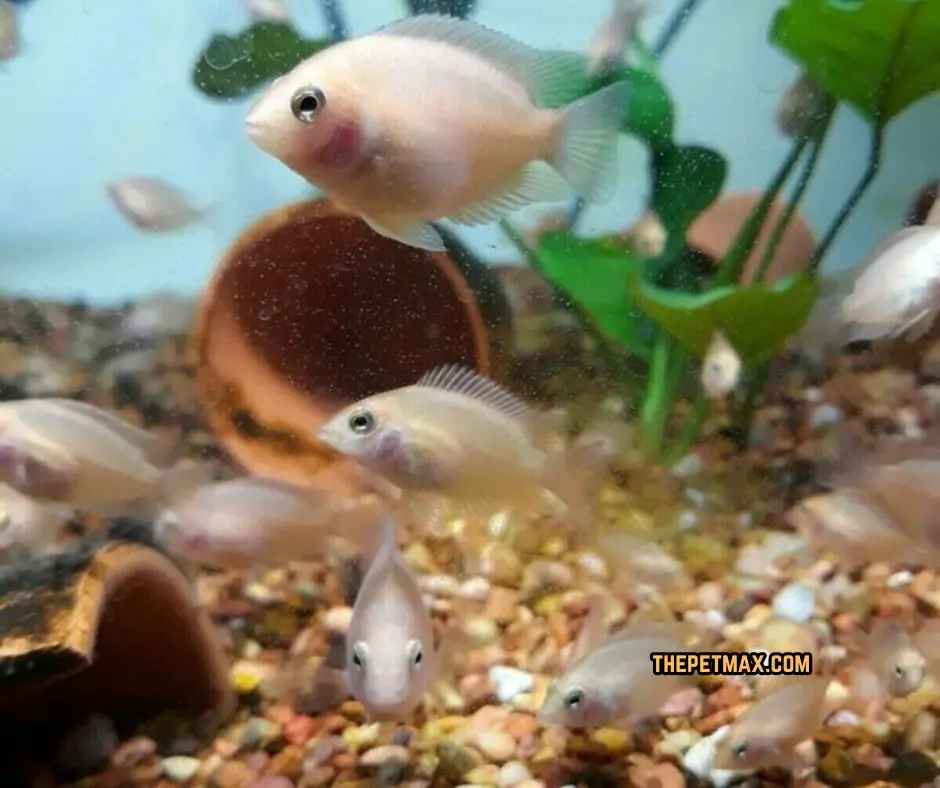
The red captive cichlid, also referred to as Amatitlania nigrofasciata, is local to Central America, consisting of Honduras, Nicaragua, Costa Rica, and Panama. Known for its unique black and white color (similar to the “prisoner’s stripes”), this freshwater fish is popular among aquarium lovers for its outstanding appearance, care and small size.
known for their competitive, solitary breeding habits and robust parentage, captive-bred cichlids are very popular among aquarium fans. The pink cichlid is a species that has been developed through breeding and is less pink in color.
Despite their hardness and adaptability, their introduction into local waters in some areas has raised concerns about their harmful effects on humans and the importance of sustainable agriculture to prevent adverse effects on local ecosystems.
Appearance of Pink Convict Cichlid:
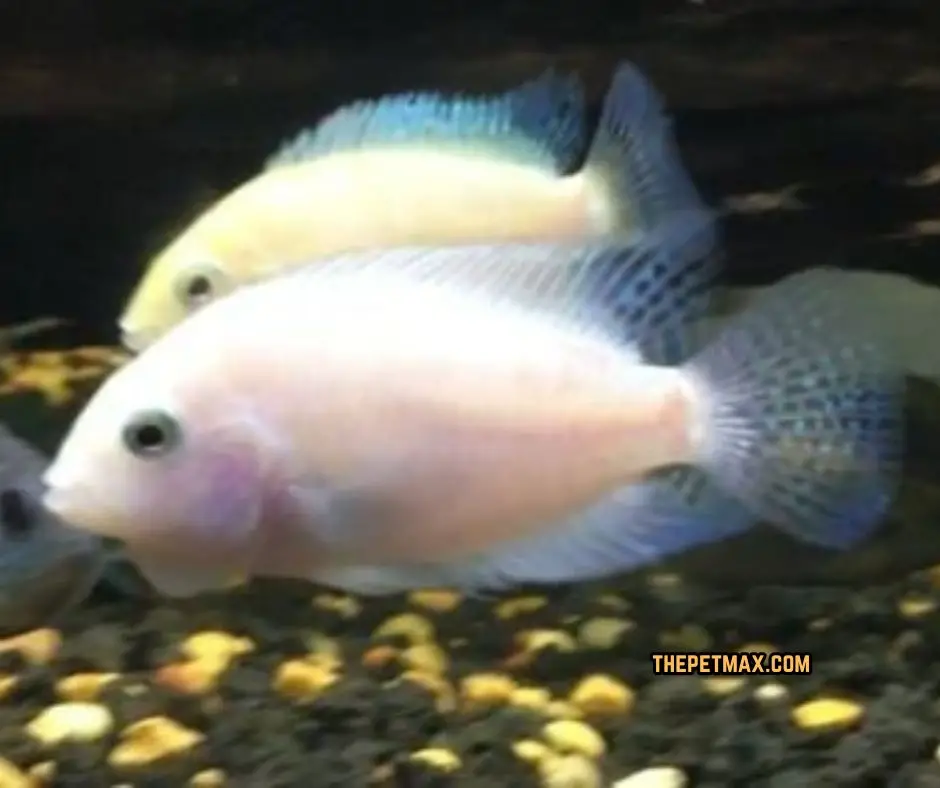
As its name suggests, the pink convict cichlid is pink and white in color. These fish are characterized by pointed dorsal and anal fins and an oval-shaped body.
Male pink convict cichlids have bigger dorsal and anal fins while females have shorter fins and red spots on their bellies.
When full of eggs, the females become plump and round. It becomes much more colorful and indicates whether the fish is about to reach spawning age. The females kick start the spawning process and create the nesting site.
Under stress, pink convicts cichlids are less active than normal, selective feeders and highly antipredatory. Juvenile pink convict cichlids range from 1.5-2 inches (4-5 cm) to 5.90 inches (15 cm) in length. Mature fish will be about 1.2 to 1.3 ounces (34-36 gm) in weight.
| Height | 1-2 Inches |
| Life Span | 8-10 Years |
| Temperament | Aggressive |
| Size | 5-9 Inches |
| Origin | Central america, being native to Guatemala, Honduras, El Salvador, Nicaragua, Costa Rica and Panama |
| Breeding | Egg Layer |
| Water Temperature Range | 75°-79 °F |
| Tank Size | 30 Gallons |
| Tank Setup | Freshwater, Plants, and Caves |
| Color | Pink, Whitish Pink with Metallic Sheen |
| Scientific Name | Amatitlania nigrofasciata |
| Water Type | Soft to Moderately Hard |
| Fish Price | $9.99 to $37.99 USD |
Behavior and Temperament of Pink Convict Cichlid:
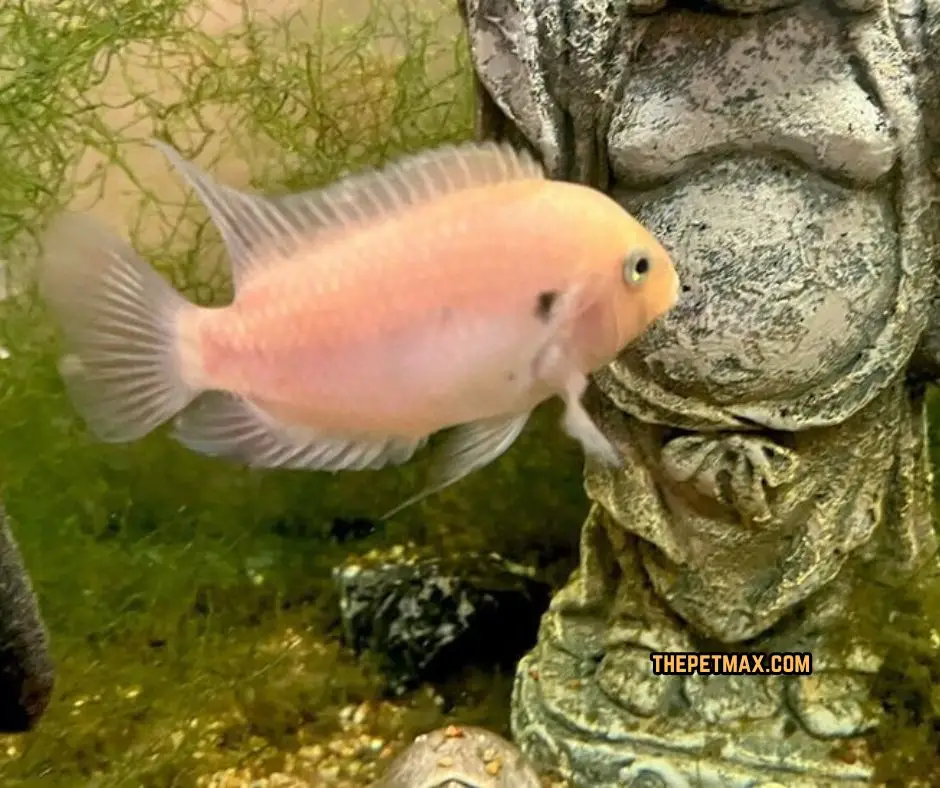
The pink Convict Cichlid is a variation of the Convict Cichlid (Amatitlania nigrofasciata) known for its pink color, a popular choice among fish hobbyists.
Some of these fishes show moderation in the aspect of aggression, particularly during the time of breeding and territory control. They are mostly resilient and grow easily, doing well in any kind of water environment.
As for the management of their aggression, it is necessary to offer a cleanly maintained tank, hiding spots, and suitable mates. Even though they are aggressive, Pink Convict Cichlids are interesting to watch as they exhibit interesting behaviors and interaction patterns in the aquarium.
Food and Diet Requirements of Pink Convict Cichlid:
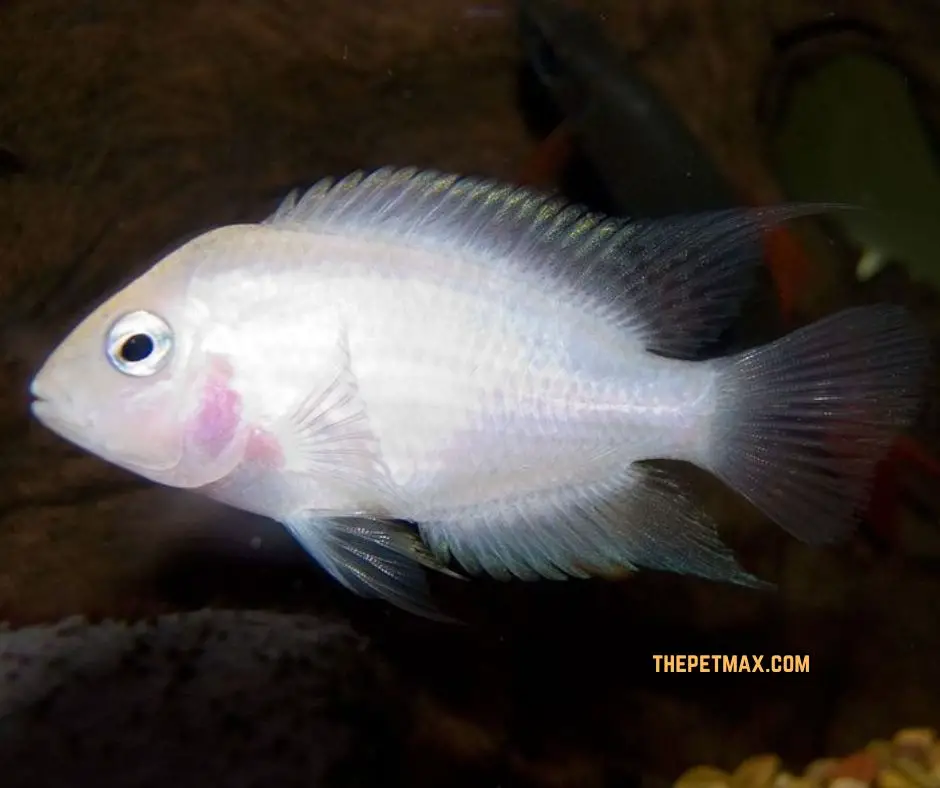
In the wild, pink convict cichlids feed on algae, insects, and larvae. They will also eat small fishes, snails and small crustaceans.
These fish are omnivores and will eat flakes pellets, and pellet food. Add bloodworms, brine shrimp, daphnia, krill, and mysis shrimps to the cichlids’ diet. Fast growth is promoted with live foods like white worms and brine shrimp.
Poor health can result from feeding pink convict cichlids only live food. Vegetables like blanched zucchini, spinach can be included in the food ration occasionally to provide good nutrition.
Algerian wafers and salt will help keep the fish pink. Feed your pink cichlid two to three times a day, allowing plenty of feeding time. Stick to the recommended portion sizes to avoid overeating.
Tank Requirements of Pink Convict Cichlid:
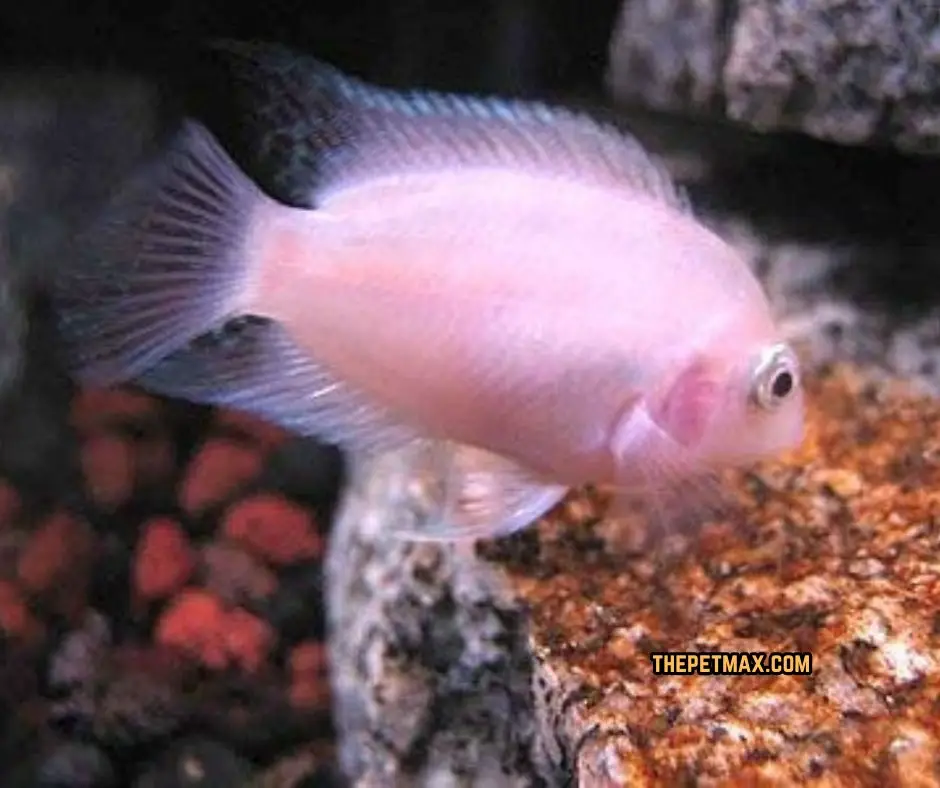
Develop a habitat closely replicating the convict cichlid’s natural surroundings in the wild. These fish swim in dull waters full of vegetation and rocks. A good aquarium should have plenty of hiding places, natural vegetation, and rocks.
The water should be soft to medium hard, with a pH between 7.0 and 8.0. Water hardness (dH) should be 9-20. Pool temperature should be 70-80°F (21.1-26.7°C). Use an aquarium heater to keep the water warm.
Pretend like they are in their natural habitat by improving some current in the tank using a filter and airstone. Also, pink cichlids are strong swimmers, so the aquarium should be large enough to accommodate swimming fish.
Should You Get a Pink Convict Cichlid for Your Aquarium?
The pink convict cichlid is considered a great species for beginners and experienced aquarists. They require little maintenance but have the potential to be aggressive toward other tank inhabitants. It is important to be able to keep the pink convict cichlids safely with other popular fish.
Despite being aggressive fish, pink convict cichlids will bring a distinctive beauty to an aquarium setup. Their bright pink coloration and big size put them second to none among aquarists.
Pink Convict Cichlid Breeding:
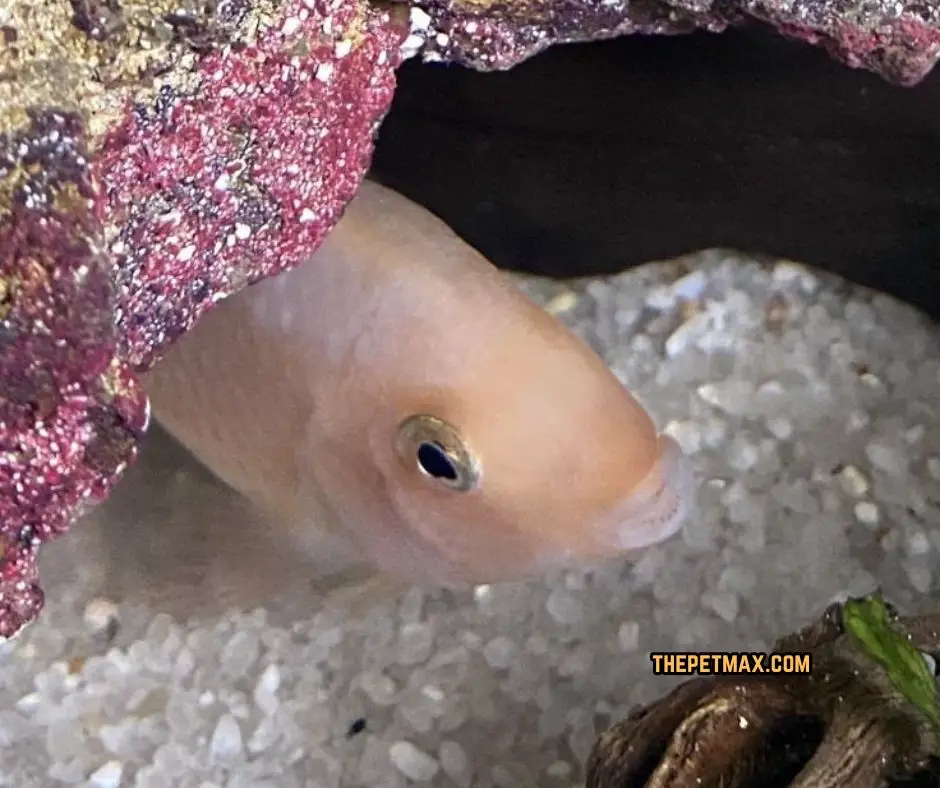
Pink Convicts are brood care egg-laying, cave-breeders that will aggressively attack every creature coming near the breeding territory of a breeding pair of Pink Convicts. Even though Pink Convicts typically breed very easily given any typical aquarium conditions; to encourage breeding, the water temperature can be elevated and kept to such temperature as 86° F.
300 eggs will be deposited by the female Pink Convict, either by digging a hole in the substrate or finding a suitable cave-like place where she could lay. 2-3 days after fertilization, the eggs will hatch and in one week the fry will be able to swim around. If the fry is taken away as soon as they hatch, then a pair of Pink Convicts will breed every few weeks.
Newly hatched fry can be fed with baby brine shrimp or crushed flake food, and they can switch to other foods as they grow. If the fry remains in the aquarium for too long, the female Pink Convict may eat the fry, causing the male Pink Convict to mercilessly attack the female, and if she fails to stay hidden, he will kill her.
Health Conditions of Pink Convict Cichlid:
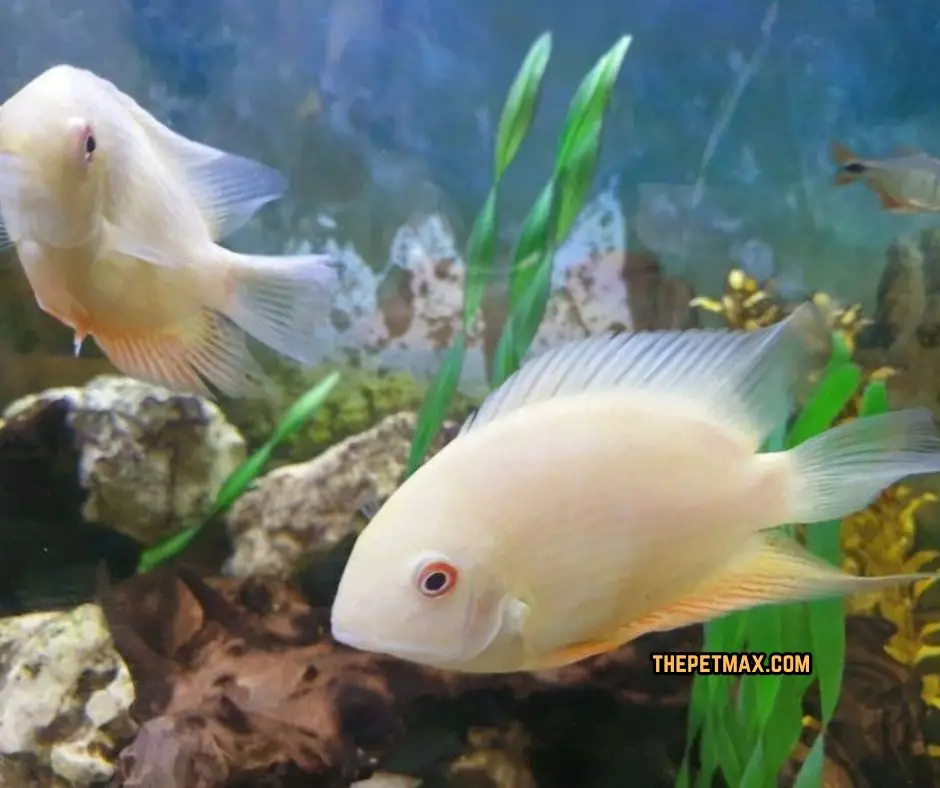
Pink Convict Cichlids Are often quite hardy fish; however, they are susceptible to certain diseases. Responsible fish owners must be aware of these common diseases and treatments to ensure that their fish do not fall ill.
- Ich: Ich is a widespread parasite that can inflict fish, which leads to the development of white spots on their fins and body. It is a very contagious disease and easily spreads to other fish in the aquarium. When treating ich, one can increase the temperature of the water to 86°F and use aquarium salt. You may also use medications directed against ich.
- Fin rot: This is a bacterial infection that leads the fin to rot and blacken. The infection can travel to other parts of the fish, causing serious health complications. For fin rot treatment, the water must be kept clean, 20% of the water should be changed daily, and medicine should be administered.
- Parasitic: Velvet is a parasitic infection that leads to yellow or gold in a brown dust-like film on the skin and gills. They may also display fast respiration and drowsiness. To deal with velvet, you can employ copper-based medication, keep water quality good and increase the temperature up to 85°F.
- Swimming bladder disease: Swim bladder disease is a condition that makes fish unable to swim and stabilize buoyancy. Overfeeding, constipation, and infection can lead to the disease. To cure swim bladder disease, you should starve the fish for a few days, manage the diet and water quality properly.
Conclusion:
The Pink Convict Cichlid is a striking fish from Central America which is clean but easy to look after. They are a great fish for a novice aquarist. Caring for them will help them live for 5 to 10 years.
Healthy maintenance of your fish in an aquarium or pond determines the number of years they live, good food, water changes or cleaning, and light cycle. The pink convict cichlid is a great aqua fish for aquariums or ponds. They are docile, and their appearance makes them an appealing choice for any aquarist with a tropical aquarium.
They are much less aggressive than their convict relatives and require to be kept in a group. Other small cichlids, tetras, and barbs can live with them, and they will eat in the bottom of your fish tank and can be seen if you put plants in the aquarium.
FAQ’s:
What is a Pink Convict Cichlid?
A Pink Convict Cichlid is a freshwater cichlid fish. Central America is their habitat and they are also called pink cichlids, zebra cichlids, and convicts.
How big do Pink Convict Cichlids get?
Pink Convict Cichlids reach a maximum of six inches in length.
What should I feed my Pink Convict Cichlid?
Pink Convict Cichlids are omnivores: both plants and animals are consumed by them. Some of the foods that they can eat are pellets, flakes, frozen food, and live food which includes worms and brine shrimp.
How often should I clean my Pink Convict Cichlid’s tank?
It is advisable to do a partial water change and clean the tank between 1-2 weeks.
